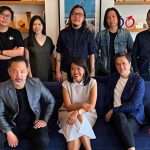Holding companies have issued a sigh of relief as results for the first half of 2021 enabled them to raise their forecasts for full-year performance.
With marketers focused on capturing growth — even as we continue to be confronted with challenges offered by the pandemic — holding companies are eager to capitalize on the changing needs of marketers and an overall drive for efficiency. With a more established direction and savings from cuts in operational costs over the past 18 months, adland’s holdcos are ready to launch into a new era.
Not just the pandemic
Though strategies for change have been in the works for three to four years and have been accelerated by the pandemic, what’s happening in holdcos is also a response to technology lifecycles. In 2023, it will be 50 years since the first handheld mobile phone was demonstrated by Motorola. In 2025, it will be 25 years since Apple laptops adopted wireless internet. We are in a zone where all industries are adapting to the culture we live in — we’re online and getting ready for the Metaverse — and marketing and media companies are no exception.
Not quite singularity
Not looking too far into the future, what might adland’s holdcos look like in 2022?
“I’d like to introduce you to our data pool”
The days of headlining creative talent are over. The most significant new business wins in 2021 have been won on vision around the future of media, data, and commerce. Clients are being impressed by accessibility to data (and the size and quality of that data) and the ability to demonstrate integration, savings, and ROI through AI and machine learning. In response, holdcos have strategically positioned themselves as being a leader in one or more of these areas through acquisition, consolidation, and good ol’ corporate messaging.
“We only have originals, no duplicates”
Call it what you like – re-evaluation or restructuring — but holdcos will continue to look for opportunities to extract the most value from their stable of agencies. Dentsu has been the most forthcoming with its plans, aiming by FY2022 to rationalize one-hundred sixty brands to six. The goal for the company is to create a “master service set” that will have no duplication of services and no competition between its own agencies.
“Let’s call in the consultants”
The role of data in business will make it harder for clients to break partnerships. Shifting data frameworks is difficult and expensive. Besides, technology can always be upgraded, tweaked, and adapted. With this in mind, one way holdcos can continue to have skin in the game — regardless of their partnership status with clients — is by being more flexible in the relationship. We see this with data-based consultancy models and productized services already making appearances in agency offerings.
What does it mean for marketers?
Differences in holding companies will be more overt once the dust has settled by the end of 2022. The top two companies will dominate, and their advantages will only grow with access to more client data. However, clients still want competitiveness in their agency ecosystems, and this will provide the lifeline for remaining holdcos, independents, and consultancies. Ultimately, regardless of the form, an agency ecosystem takes, performance management will be the linchpin that upholds the quality of client-agency relationships going forward.
By Greg Paull, Co-founder & Principal, R3
MARKETING Magazine is not responsible for the content of external sites.









